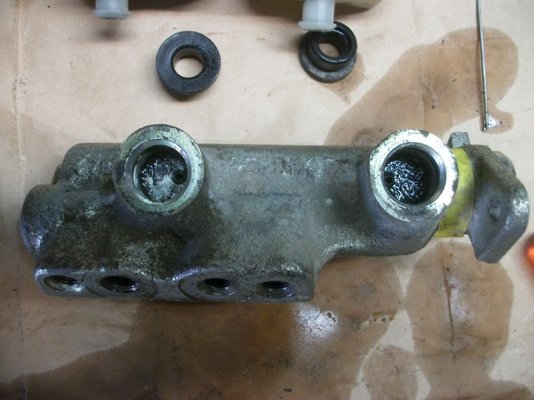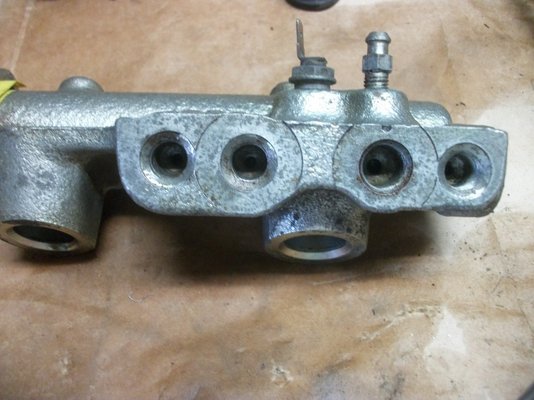mojobaby
Enthusiast
- Messages
- 1,287
For the past 2 days, I've been trying to bleed my brakes but haven't had any success.
I have drum brakes, both front and rear. I've replaced all the brake shoes, new brake cylinders on all wheels and also a new master cylinder.
I also blew out each brake line to clear any 20 year old blockages.
Working by myself, I used the tube and bottle method.
Starting with the furthest away wheel, I managed to pump brake fluid until it came out of the bleed nipples on all the wheels.
My brake pedal had no resistance at all and went all the way to the floor.
I took the front left drum off and could see some movement in the brake shoes.
I did the same to the back left wheel and there was no movement at all, so I took off the brake shoes and tried again and the pressure blew out the one side of the brake cylinder.
I put everything together again and bled the system again and still I have no resistance in the pedal. It goes straight to the floor.
So what am I doing wrong. Can there still be some air in the system?
Help please!!
I have drum brakes, both front and rear. I've replaced all the brake shoes, new brake cylinders on all wheels and also a new master cylinder.
I also blew out each brake line to clear any 20 year old blockages.
Working by myself, I used the tube and bottle method.
Starting with the furthest away wheel, I managed to pump brake fluid until it came out of the bleed nipples on all the wheels.
My brake pedal had no resistance at all and went all the way to the floor.
I took the front left drum off and could see some movement in the brake shoes.
I did the same to the back left wheel and there was no movement at all, so I took off the brake shoes and tried again and the pressure blew out the one side of the brake cylinder.
I put everything together again and bled the system again and still I have no resistance in the pedal. It goes straight to the floor.
So what am I doing wrong. Can there still be some air in the system?
Help please!!











 I've given up trying to bleed the brakes with the brake pedal as it just doesn't work for me. I've bled my brakes quite a few times before but never when the brakes lines and master cylinder were empty to start with.
I've given up trying to bleed the brakes with the brake pedal as it just doesn't work for me. I've bled my brakes quite a few times before but never when the brakes lines and master cylinder were empty to start with.